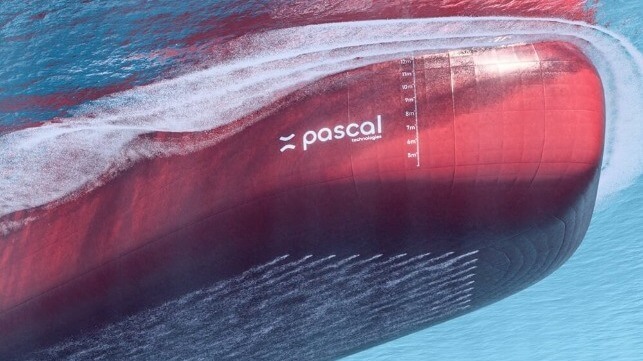Innovations in Maritime Transportation Technologies

In the realm of maritime transportation, innovation is key to enhancing efficiency and performance. Dr. C. K. Prahalad, a professor at the University of Michigan, emphasizes the importance of technology convergence in his influential work, “Competing for the Future.” He highlights how merging different technologies can lead to the development of advanced products and services. One promising area of exploration is the combination of air pressure systems and hydrofoil technology. This innovative approach aims to reduce water drag and lower energy consumption for vessels traveling on water.
The concept of using air to lift vessels is not new. In the 1950s, British inventor Christopher Cockerill introduced the hovercraft, which utilized low-pressure air to glide over water and land. This groundbreaking invention paved the way for modern advancements. Today, companies like Pascal Technologies from Norway and Damen from the Netherlands are building on Cockerill’s ideas. They have developed systems that pump air beneath a vessel’s hull, allowing it to rise partially out of the water. This reduces hydrodynamic drag and energy requirements, making water transportation more efficient.
The evolution of hydrofoil technology also plays a crucial role in this innovation. Originating in France in the late 1800s, hydrofoils were initially designed to increase the speed of rowboats. Recent advancements have led to the integration of hydrofoils in various vessels, including kayaks and larger boats. Companies like Hull Vane in the Netherlands are now creating stern-mounted hydrofoils that redirect water waves, further decreasing drag and energy needs. The potential for combining these technologies could revolutionize maritime transportation, leading to faster, more efficient vessels.
Enhancing Inland Waterway Transportation
The integration of air pressure technology and hydrofoils has significant implications for vessels operating on inland waterways. Companies like Pascal Technologies and Damen Industries have successfully implemented air pressure systems in several boats. When activated, these systems lift the hulls higher in the water, reducing the submerged cross-section at the bow. This design minimizes energy consumption while the vessel is in motion.
Inland waterways typically experience smaller waves compared to oceanic conditions. This makes them ideal for vessels designed with advanced hull configurations. By utilizing the air pressure technology developed by Pascal Technologies and Damen Industries, boats can navigate shallow sections of waterways without sustaining damage. Additionally, incorporating hydrofoils at the stern can help maintain elevation and further reduce energy requirements.
Regulatory authorities in many countries mandate that vessels produce minimal waves while navigating inland waterways. This requirement aligns perfectly with the advancements in air pressure and hydrofoil technologies. By adopting these innovations, vessels can comply with regulations while improving their operational efficiency. The combination of reduced drag and energy consumption not only benefits the environment but also enhances the overall performance of inland waterway transportation.
The Future of Hydrofoil and Airborne Watercraft
The future of maritime transportation is poised for transformation with the development of hydrofoil vessels and airborne watercraft. Large hydrofoil vessels require substantial propulsive power to overcome water resistance and achieve the necessary speed for lift-off. However, by designing vessels with recessed chambers filled with pumped air, builders can significantly reduce energy requirements. This innovative approach allows for the creation of larger and heavier vessels capable of sailing on hydrofoils at speeds exceeding 20 knots.
Potential applications for these advanced vessels include ferry services connecting coastal cities and offshore islands. Companies like Regent Craft in Boston are exploring the integration of low-speed hydrofoils in their designs. This technology enables vessels to transition smoothly from port areas to open water, where they can accelerate to lift-off speed. Early testing of Regent Craft’s initiatives has shown promising results, indicating a viable path for future development.
Moreover, the convergence of air pressure systems and hydrofoil technology opens the door for the creation of mega-size seaplanes and ground-effect planes. These vehicles could operate efficiently between water and air, addressing the growing demand for transportation solutions. As international airports reach capacity, the need for alternative freight and passenger transport methods becomes increasingly urgent. The combination of innovative technologies may provide a sustainable solution to meet future transportation challenges.
The convergence of air pressure and hydrofoil technologies presents exciting opportunities for the future of maritime transportation. By integrating these advancements, companies can enhance the efficiency and performance of vessels operating on inland waterways and beyond. The potential applications for these innovations are vast, ranging from improved ferry services to the development of mega-size seaplanes. As the industry continues to evolve, embracing technological breakthroughs will be crucial in meeting the demands of modern transportation.
